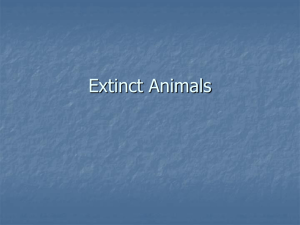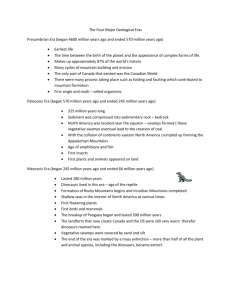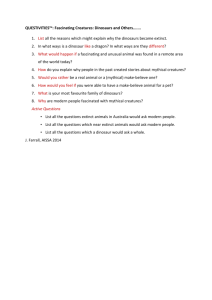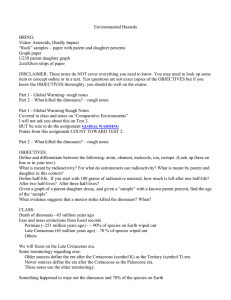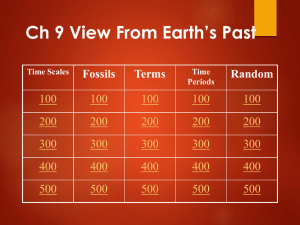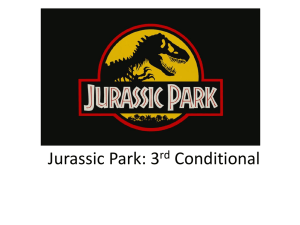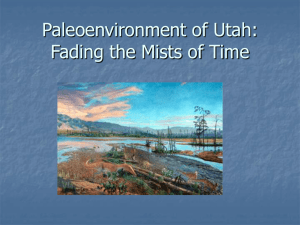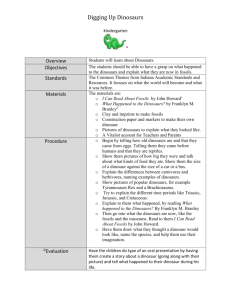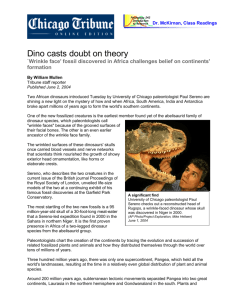Earth History Timeline Cards – Part A The Solar
advertisement
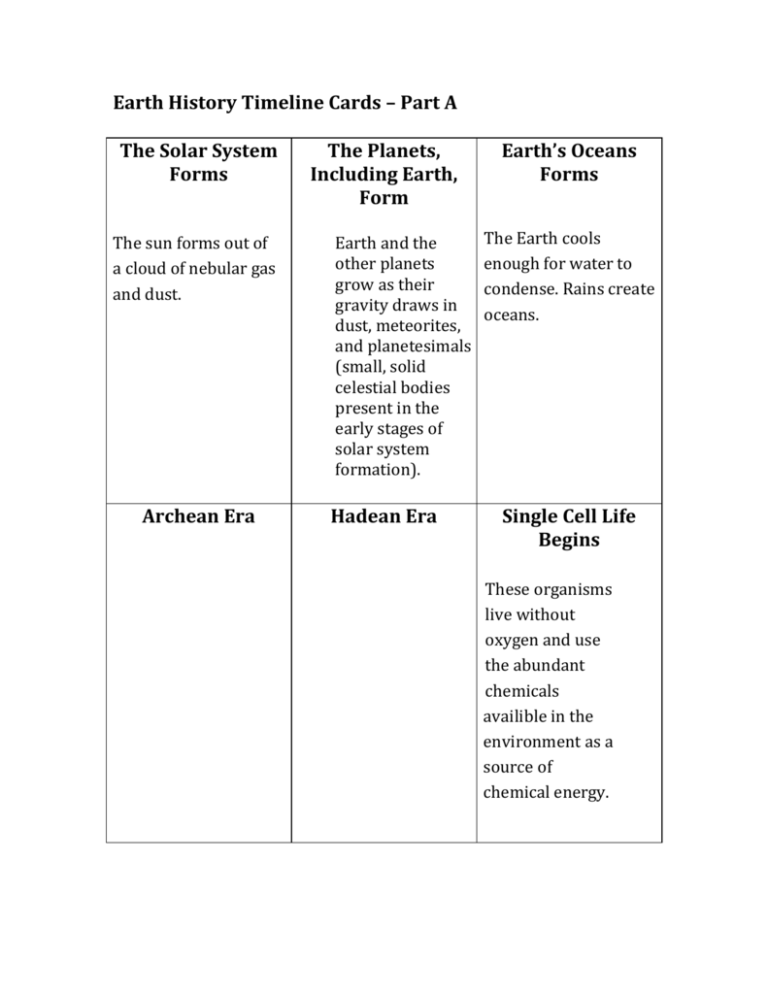
Earth History Timeline Cards – Part A The Solar System Forms The sun forms out of a cloud of nebular gas and dust. Archean Era The Planets, Including Earth, Form Earth and the other planets grow as their gravity draws in dust, meteorites, and planetesimals (small, solid celestial bodies present in the early stages of solar system formation). Hadean Era Earth’s Oceans Forms The Earth cools enough for water to condense. Rains create oceans. Single Cell Life Begins These organisms live without oxygen and use the abundant chemicals availible in the environment as a source of chemical energy. Photosynthesis Begins Proterozoic Era Cyanobacteria begin to use light as an energy source. Oxygen, a byproduct of photosynthesis, begins to accumulate in Earth’s atmosphere. Earth’s Ozone Layer Forms Enough oxygen accumulates in the atmosphere to form the ozone (03) layer. The ozone layer shields the Earth’s surface from harmful ultraviolet radiation coming from the sun. This shielding enables microbes to move onto the surface. Microbes Begin to Use Oxygen Oxygen reacts with many chemicals, such as sugar, to release large amounts of energy. As microbes begin to use oxygen to release energy, the extra energy enables them to become larger and more complex. Oxygen Levels Skyrocket Oxygen levels in the atmosphere rise to about 20%. This oxygen enables aerobic microbes, which require oxygen, to grow larger and more complex. Single-cell Life Invades the land Protists begin to colonize moist habitats on land, such as marshes, ponds, and streams. Some protists become able to withstand drying and begin to live in soil and on rocks. Multicellular Life Arises Fossil evidence shows the emergence of multicellular life (protists). Ultimately, the multicellular protists will give rise to groups of large organisms such as the kelps and slime molds. Paleozoic Era The Great Extinction Earth cools so much that the land and many marine areas become covered in thick layers of ice. The Earth's internal heat keeps the bottoms of the oceans from freezing. All but a small fraction of life goes extinct. Greenhouse Effect Begins, Earth Thaws After volcanoes have added CO2 to atmosphere for millions of years, the Greenhouse Effect begins and warms Earth. Number of Species Amphibians Explodes Colonize the Land An explosive growth of life occurs, with organisms developing many different body plans and sizes. Life is still largely aquatic. Arthropods, such as crabs and insects, account for 80% of all animal life. Marine animals evolve to breath air and walk without the support of water. They begin to colonize the land. Lichens, a symbiotic association of fungi and algae, begin to colonize dry, rocky areas. Pangea Assembled Mesozoic Era .At this time, all Earth’s landmasses have merged together into a super-continent known as Pangea. The Reign of the Dinosaurs Dinosaurs evolve and take advantage of new resources and habitats. They are the dominant animals. Insects and flowering plants also flourish and diversify. Early Dinosaurs Appear Reptiles and amphibians evolve and diversify. Early dinosaurs arise, and the Age of Dinosaurs begins. Also, the first mammals appear. Pangea Breaks Apart The plates of Earth’s crust shift, breaking Pangea apart. The life on each plate is separated from the life on the other plates. The split between what is now Europe and North America forms the Atlantic Ocean. Cenozoic Era Earth History Timeline Cards – Part A The Age of Mammals Begins An asteroid impacts Earth and wipes out much of the life on the surface. With dinosaurs extinct, mammals take over the available ecological niches. Hominids Use Stone Tools The early hominids form cooperative societies and communicate using language. Modern Plants and Animals Appear Most major groups of plants and animals that exist today have formed now. The End of Dinosaurs An asteroid smashes into Earth. The heat kills much of the surface life. Dust dims the amount of sunlight reaching the Earth's surface, and temperatures plummet. Much life, including all animals over 25 kg, disappears. Hominids Walk Upright In Africa, Australopithecus develops a skeleton that permits walking upright on two feet. Our Hominid Species Dominates the Planet Other species of hominids go extinct, possibly due to competition with our species, homo sapiens sapiens.
